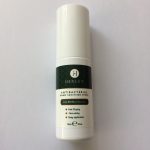Hair Loss fact sheet
Information sheet
There are many different types of hair loss with different causes and treatments.
The most common type of hair loss is commonly known as 'male pattern baldness' and it is thought to occur, at least to some degree, in 66% of the male population. It is characterized by hair receding from the lateral sides of the forehead, known as "receding hairline" or "receding brow." An additional bald patch may develop on top (vertex). The trigger for this type of baldness, which is also known as androgenic alopecia, is currently believed to be 5-alpha reductase, an enzyme that converts the hormone testosterone into dihydrotestosterone (DHT), which, in genetically-prone hairs on the scalp, inhibits hair growth. Onset of hair loss sometimes begins as early as end of puberty, and is mostly genetically determined.
Hair loss is by no means restricted to men however and there are several types of hair loss that affect both sexes. Among some of the other causes of hair loss are stress, hormonal inbalances, infections, and autoimmune disorders. It is not always known how these problems lead directly to hair loss, but in some cases it is thought to be due to an inflammatory response of the skin surrounding the hair follicles.
There are many treatments available for hair loss, but in some cases of hair loss the hair can start regrowing again naturally. Treatments vary in effectiveness depending on their type, but also with the nature of the hair loss that is being treated.
Emu oil
Emu oil is a 100% natural remedy that has been used in Aboriginal medicine for centuries. The oil has now become famous around the Globe for its powerful soothing properties and its popularity as one of the most effective natural remedies available is growing quickly.
A study published in the journal 'Plastic Reconstructive Surgery' (5) in 1998 showed that emu oil application halved the recovery time of skin wounds when topically applied. This gives an indication that emu oil may be able to help with skin and hair cell growth and generation. This is further supported by studies by Dr Holick (MD, Ph.D., Professor of Medicine, Physiology, and Dermatology at Boston University School of Medicine) that showed a 20% increase in DNA synthesis in skin cells on emu oil application. This work by Dr Holick further reported that 80% of hair follicles that had been asleep woke up and began growing hair.
The enzyme 5-alpha-reductase, which converts testosterone into the hormone DHT (claimed to be one of the main culprits to cause balding), is known to be inhibited by several fatty acids, including Gamma Linolenic acid (GLA), Alpha Linolenic acid (ALA), Linoleic Acid, and Oleic Acid. Emu oil contains both linoleic and linolenic acids and is particularly high in oleic acid.
Furthermore several published studies have shown emu oil application reducing inflammation (1-4) when topically applied to skin.
References
1. Lopez A, Sims DE, Ablett RF, Skinner RE, Leger LW, Lariviere CM; Jamieson LA, Martinez BJ, Zawadzka GG Effect of emu oil on auricular inflammation induced with croton oil in mice. Am J Vet Res. Dec;1999;60 (12):1558-1561
2. Whitehouse MW, Turner AG, Davis CKC, Roberts MS Emu Oil(s): A source of non-toxic transdermal anti-inflammatory agents in aboriginal medicine. Inflammopharmacology. March,1998;6(1) 1-8
3. Snowden JM, Whitehouse MW Anti-inflammatory activity of emu oils in rats. Inflammopharmacology-1997;5(2)127-132
4. Snowden JM., O'Malley PJ. Ellis TM Emu Oil It's Anti-Inflammatory Properties. A report for the Rural Industries Research and Development Corporation, October 1999
5. Politis MJ, Dmytrowich A Promotion of Second Intention Wound Healing by Emu Oil Lotion: Comparative Results with Furasin, Polysporin, and Cortisone. Plast Reconstr Surg. 1998 Jun; 102(7):2404-2407

